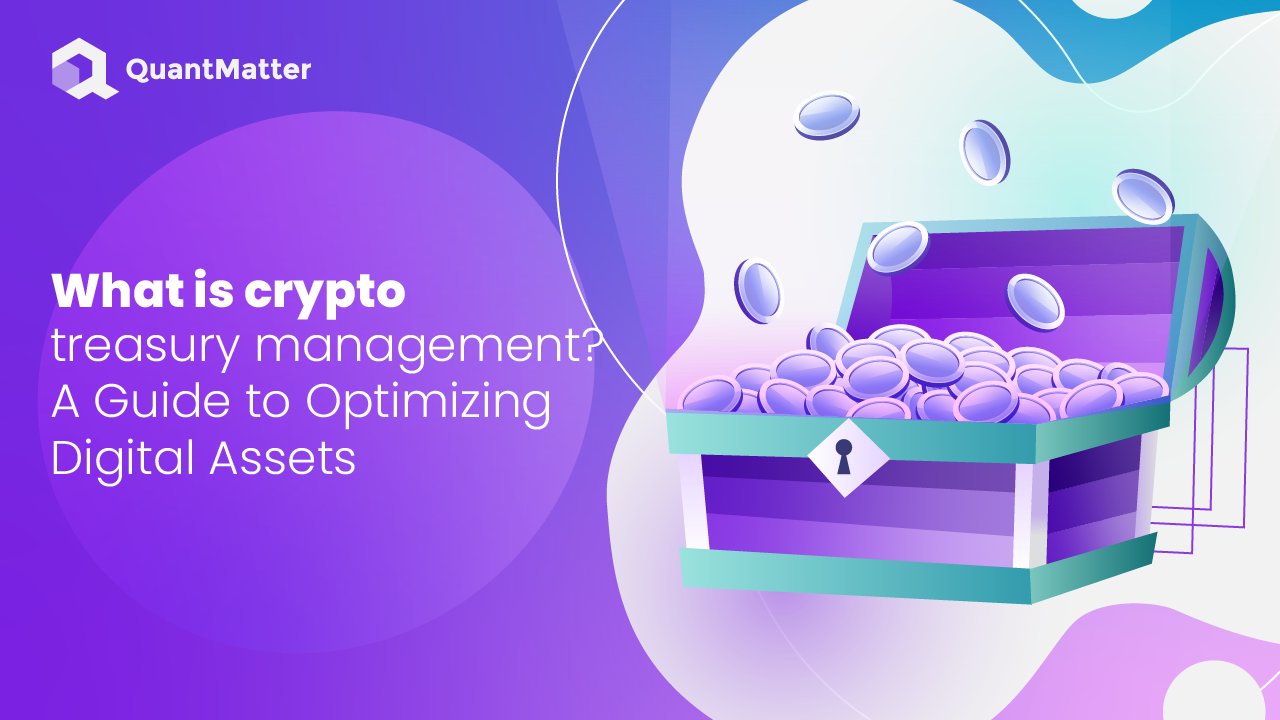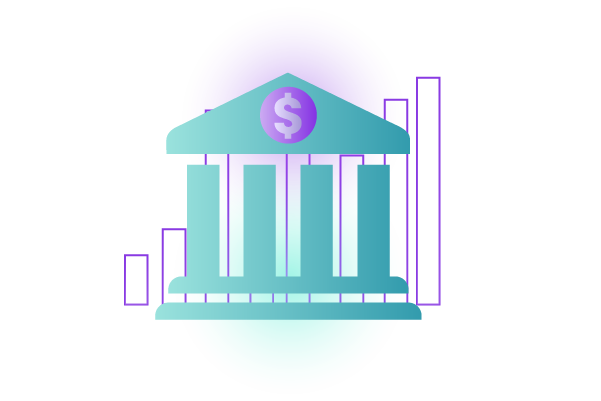
In recent years, cryptocurrencies have captured the attention of the global financial landscape, revolutionizing the way we perceive and interact with assets. As the popularity and adoption of digital currencies continue to rise, the need for effective management and optimization of these digital assets becomes increasingly critical. Crypto treasury management emerges as a strategic discipline that enables individuals, businesses, and institutions to navigate the complexities of the cryptocurrency market while preserving and maximizing the value of their digital holdings.
In this comprehensive guide, we will delve into the realm of crypto treasury management, providing insights into its fundamental principles, key components, and strategies for optimizing digital assets. Whether you are an experienced investor seeking to enhance your portfolio or a company looking to manage your cryptocurrency reserves, understanding crypto treasury management is a vital step towards harnessing the potential of this innovative financial landscape.
Throughout this guide, we will explore the significance of asset allocation, liquidity management, and security measures in the context of crypto treasury management. We will discuss the strategies employed to optimize digital assets, including hedging, staking, yield farming, and dollar-cost averaging. Furthermore, we will emphasize the importance of robust security measures and risk mitigation strategies to safeguard digital assets in an ever-evolving and potentially volatile environment.
What is Crypto Treasury Management?

Crypto treasury management refers to the practice of managing and optimizing the financial assets of a company or organization that hold cryptocurrencies. As cryptocurrencies have gained prominence and value, many businesses and institutions have started to incorporate them into their financial strategies. Crypto treasury management involves various activities, including acquiring, storing, securing, and utilizing digital assets in a way that maximizes their value and aligns with the organization’s goals.
One of the primary aspects of crypto treasury management is the acquisition and accumulation of cryptocurrencies. This involves determining which cryptocurrencies to hold, considering factors such as liquidity, market stability, and long-term growth potential. Companies may choose to acquire cryptocurrencies through exchanges, over-the-counter (OTC) markets, or even participate in initial coin offerings (ICOs) or token sales.
Once the cryptocurrencies are acquired, the treasury management focuses on their secure storage and protection. Since cryptocurrencies are digital assets that exist on decentralized networks, safeguarding them from theft, hacking, or loss becomes crucial. This often involves utilizing various security measures, such as cold wallets (offline storage), multi-signature wallets, hardware wallets, and secure custody solutions offered by trusted third parties.
Also Read : Market Making Service : Definitions and How It Works
In addition to acquiring and securing cryptocurrencies, effective crypto treasury management also involves developing strategies to utilize these assets for financial purposes. This may include deploying cryptocurrencies for payments, funding projects, conducting transactions with partners, or even diversifying into other investments. Careful consideration is given to factors like market liquidity, tax implications, regulatory compliance, and risk management when deciding how and when to utilize the digital assets.
Key Components of Crypto Treasury Management

Crypto treasury management comprises several key components that collectively contribute to the successful optimization of digital assets. These components are crucial for mitigating risks, ensuring liquidity, and maximizing returns. Understanding each component is essential for implementing a comprehensive crypto treasury management strategy.
1. Asset Allocation
Effective asset allocation is a fundamental aspect of crypto treasury management. It involves diversifying investments across different digital assets to minimize risk and maximize returns. Asset allocation decisions should be based on a thorough analysis of market trends, historical data, and future projections. Additionally, consulting with industry experts and leveraging research resources can provide valuable insights for informed decision-making.
When allocating assets, it is essential to consider factors such as the purpose of the investment, risk tolerance, and time horizon. Some common strategies include allocating a portion of the treasury to established cryptocurrencies with a proven track record, while also exploring emerging projects with high growth potential. By diversifying the asset portfolio, one can potentially reduce the impact of market volatility and increase the chances of capturing profitable opportunities.
2. Liquidity Management
Managing liquidity is crucial for ensuring the availability of funds when needed. In the context of cryptocurrencies, liquidity management involves balancing the need for immediate access to funds with the potential for long-term asset appreciation. It requires careful consideration of the liquidity characteristics of different digital assets and the liquidity needs of the organization.
One strategy for optimizing liquidity management is to maintain a portion of the treasury in stablecoins. Stablecoins are cryptocurrencies designed to minimize price volatility by pegging their value to a stable asset, such as a fiat currency. By holding stablecoins, organizations can quickly access liquidity without relying solely on volatile cryptocurrencies. Additionally, leveraging decentralized finance (DeFi) protocols can provide liquidity options through lending and borrowing mechanisms.
3. Security and Risk Mitigation
Given the inherent risks associated with cryptocurrencies, ensuring robust security measures is paramount. Protecting digital assets from theft, hacking, and unauthorized access is crucial to maintaining their value. Crypto treasury management should incorporate comprehensive security practices and risk mitigation strategies.
Implementing multi-factor authentication (MFA) adds an additional layer of security by requiring multiple forms of verification for accessing digital asset wallets and platforms. Hardware wallets, such as specialized devices designed to securely store private keys offline, provide enhanced protection against online threats. Cold storage solutions, such as offline wallets and vaults, isolate digital assets from the internet, significantly reducing the risk of cyberattacks.
Regular audits and penetration testing should be conducted to identify vulnerabilities and address any potential weaknesses in security infrastructure. Compliance with industry regulations and standards is essential for ensuring the security and integrity of digital assets. Staying updated on the latest security best practices and industry developments is crucial in mitigating emerging risks.
Strategies for Optimizing Digital Assets
When it comes to managing and optimizing digital assets, employing effective strategies is crucial to maximize their potential returns and mitigate risks. In this section, we will explore various strategies that individuals and organizations can utilize to optimize their digital asset portfolios.
Hedging
Hedging involves taking positions to offset potential losses in the value of digital assets. It can be achieved through various financial instruments such as futures contracts, options, or swaps. Hedging strategies allow individuals and organizations to protect themselves against adverse market movements while still participating in potential upside opportunities.
For example, if an organization holds a significant amount of Bitcoin and expects a potential price decline, they can enter into a short futures contract or purchase put options. If the price does indeed decrease, the gains from the hedging position can help offset the losses incurred on the Bitcoin holdings.
Staking and Yield Farming
Staking refers to the process of holding cryptocurrencies in a wallet to support the operations of a blockchain network. In return, participants earn additional cryptocurrency rewards. Staking can be an effective strategy for optimizing digital assets by generating passive income.
Different blockchain networks offer staking opportunities with varying rewards and lock-up periods. Evaluating factors such as the network’s security, staking rewards, and potential returns is crucial when considering which cryptocurrencies to stake.
Yield farming involves actively participating in DeFi protocols to generate additional income by lending or providing liquidity. By depositing cryptocurrencies into liquidity pools, individuals can earn interest or receive rewards in the form of additional tokens. However, it is important to assess the risks associated with each DeFi protocol and evaluate the smart contracts’ security and reputation.
Also Read: 12 Best Quantitative Trading Firms in 2023
Dollar-Cost Averaging
Dollar-cost averaging (DCA) is an investment strategy that involves investing a fixed amount of money at regular intervals, regardless of market conditions. This strategy helps mitigate the impact of short-term market volatility and reduces the risk of making poor investment decisions based on price fluctuations.
By consistently purchasing digital assets over time, investors can potentially accumulate a substantial portfolio while benefiting from the average cost per unit. DCA reduces the need to time the market and takes advantage of both market downturns and upswings.
Security and Risk Mitigation
Crypto treasury management must prioritize security and risk mitigation due to the unique challenges posed by the digital asset landscape. A comprehensive approach includes regularly reviewing and updating security protocols, conducting thorough due diligence on cryptocurrency exchanges and third-party service providers, staying informed about the latest security best practices and industry developments, and maintaining a robust incident response plan in the event of a security breach.
Conclusion
Crypto treasury management is a critical aspect of effectively managing and optimizing digital assets in the dynamic world of cryptocurrencies. By comprehending the foundations, key components, and strategies associated with crypto treasury management, individuals and organizations can navigate the complexities of the cryptocurrency landscape with confidence.
Throughout this guide, we have explored the key components of crypto treasury management, including asset allocation, liquidity management, and security measures. We have discussed strategies such as hedging, staking, yield farming, and dollar-cost averaging that can be employed to optimize digital assets. Furthermore, we have emphasized the importance of robust security measures and risk mitigation strategies in protecting digital assets from potential threats.
Implementing an effective crypto treasury management approach allows individuals and organizations to not only safeguard their digital assets but also enhance their financial positions. By diversifying asset allocations, managing liquidity effectively, and staying abreast of security best practices, individuals and organizations can mitigate risks and maximize the potential returns of their digital asset portfolios.
Crypto treasury management is a fundamental discipline that ensures the efficient use and protection of digital assets in the cryptocurrency market. By integrating the principles and strategies discussed in this guide, you will be better equipped to optimize your digital assets, mitigate risks, and capitalize on the vast opportunities presented by the evolving world of cryptocurrencies. As you embark on your crypto treasury management journey, always stay informed, adapt to market dynamics, and make well-informed decisions to secure a prosperous future for your digital assets.What i
I'm Carina, a passionate crypto trader, analyst, and enthusiast. With years of experience in the thrilling world of cryptocurrency, I have dedicated my time to understanding the complexities and trends of this ever-evolving industry.
Through my expertise, I strive to empower individuals with the knowledge and tools they need to navigate the exciting realm of digital assets. Whether you're a seasoned investor or a curious beginner, I'm here to share valuable insights, practical tips, and comprehensive analyses to help you make informed decisions in the crypto space.
-
Carinahttps://quantmatter.com/author/carina/
-
Carinahttps://quantmatter.com/author/carina/
-
Carinahttps://quantmatter.com/author/carina/
-
Carinahttps://quantmatter.com/author/carina/

